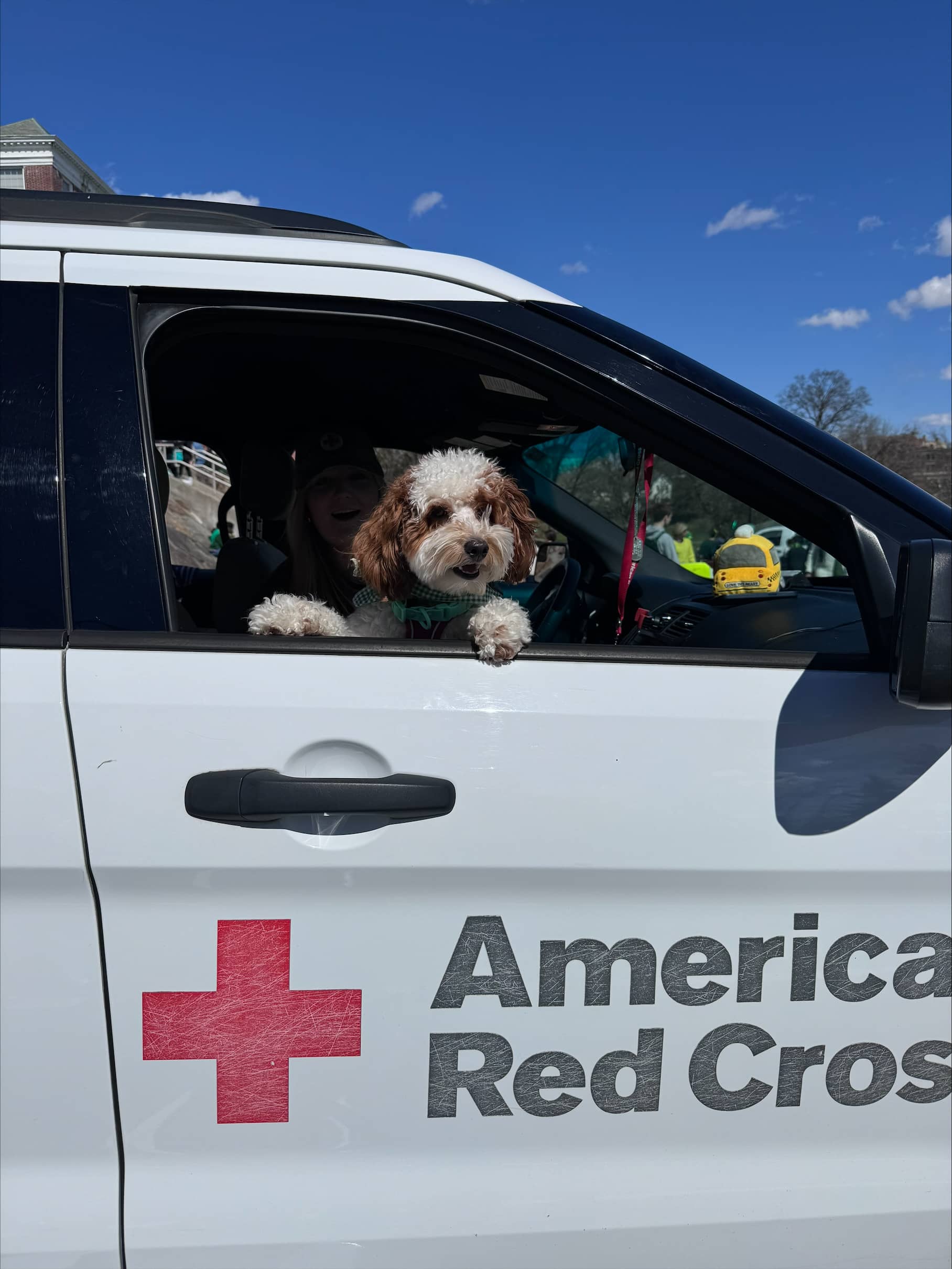By Stephanie Dunn Ashley

Loyal readers of this column will know that my family recently added a new member, the adorable and lovely Benson Patrick. Benson has been a beloved part of our family for a year now, and he is currently working on his puppy college diploma at school with the girls. Maybe it’s all the pent-up motherhood unable to penetrate the walls of faraway college life, but I find myself worrying about what would happen to him in an emergency — on top of the many years of worrying about my daughters that I have already banked.
Or maybe it was my firsthand experience of giving him the wrong food that had me eager to learn ways to keep him safe.
This April, in the spirit of Pet First Aid Awareness Month, I want to share a few ways that you and I can help make sure the Benson Patricks in our lives are as safe as possible during an emergency.
Here at the Red Cross, we have incorporated pet care into our disaster responses. Disaster Action Team volunteers in Greenwich and the entire Greater New York region have pet kits available to help families after a home fire or other disaster. These kits include basic pet items such as food, pee pads, kitty litter, and bowls. It is never easy to go through a disaster, but by helping people care for their pets — we can help make things a little less stressful for everyone.
In our own families, we should make sure that our pets have their own ‘go-bag’ (just like all the two-legged members of our families) in a sturdy, easy-to-carry container. Benson’s go-bag has a sturdy leash and harness, as well as a carrier, to help transport him safely. He also has food, drinking water, pee pads, and bowls — and if he liked canned food, we would also include an opener. If needed, we would also add his medications and copies of his medical records stored in a waterproof bag, and a first aid kit. We would write down his basic feeding schedule, medical conditions, behavior problems, and contact information for our family vet just in case Benson needs to board separately from us during an evacuation. He has a small bed and a couple toys, and last but certainly not least — we included a couple of current photos of us together with Benson in case he gets lost.
You can also take some time and learn about pet first aid. The American Red Cross offers an online course for cat and dog first aid, which takes about 30 minutes to complete. I recently took this course and was happy to learn about how to help Benson if he were choking, in need of CPR, wounded, or having a seizure. I also was reminded to be aware of his normal vital signs so that I can better notice any irregularities.
Another step you can take is to download the Pet First Aid app from the Red Cross. This app includes step-by-step instructions (with photos and videos) for common first aid and emergency situations like bleeding, breathing, and cardiac emergencies, as well as tools to help you locate pet-friendly hotels and vet hospitals.
Any parent knows that we will always worry for our families, but it is good to know that I am as ready as I can be to help the animals in my life I love.
Stephanie Dunn Ashley, Chief Executive Officer, American Red Cross, Metro New York North Chapter.




